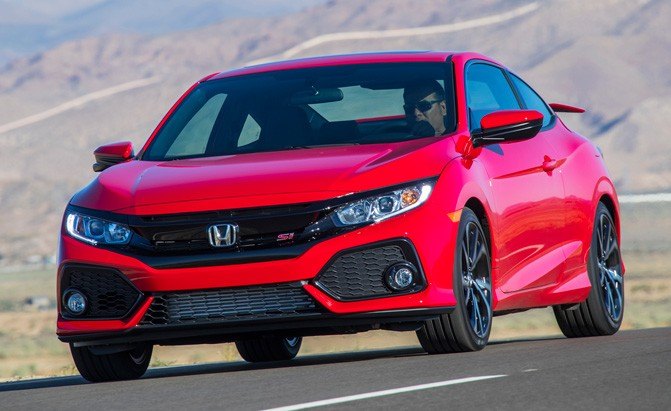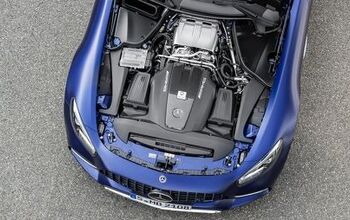What is a Turbo Engine and Are They Reliable?

As the world’s governments continue to crack down on fuel economy and emissions regulations, small displacement turbocharged engines have started to become more commonplace.
Smaller displacement turbocharged engines can return excellent fuel economy if driven carefully, but are still capable of producing lots of power on paper. For this reason, automakers have begun to use them in order to meet these increasingly strict emissions standards and deliver customers the same levels of engine power as before or sometimes even higher.
In this post, we’re going to briefly describe to you how a turbocharged engine works and answer common questions consumers have with regards to turbocharged (sometimes called forced induction) engines. Turbo engines can be found in all types of vehicles these days, including trucks and SUVs, so we’re hoping this post will arm you with the knowledge you’ll need when you go shopping for a new or a modern used vehicle.
What is a Turbo Engine and How How Does a Turbocharged Engine Work?
In the simplest of terms, a turbocharger draws in air, compresses it and then feeds the pressurized air into your engine’s intake manifold. This dense, pressurized air then forcefully enters the combustion chamber when the piston makes a downward stroke. With more oxygen entering your engine at a quicker rate, you can burn more fuel. And when you burn more fuel, you make more power.
That’s only one part of the turbocharging process, though. After the combustion cycle has completed, the hot waste gas exits the combustion chamber through an exhaust outlet. As the waste gas exits, it passes through the turbocharger and spins a compressor wheel. As the compressor wheel spins, it draws in cool atmospheric air from the opposite side of the turbo, starting the process over again. It’s not a complicated process, but this can be hard to envision, so have a look at this diagram:
There’s one small issue with this process: air gets hot as you compress it and heat robs your engine of power. The compressed air must be cooled before it enters your intake manifold, then. To remedy this, the compressed air will pass through a heat exchanger, sometimes called an intercooler, on its way to the intake manifold. An ‘air-to-air’ intercooler will cool the hot compressed air using the flow of the outside air as you drive along. There’s also a ‘water-to-water’ intercooler, which uses cold water to cool the compressed air.
Pros and Cons of a Turbocharged Engine
The two major advantages of a turbocharged engine are greater power density and increased fuel efficiency.
ALSO SEE: Top 15 Best Engine Air Filters
Because a turbocharger enables a small engine to produce more power, manufacturers can downsize their engine displacement. A smaller engine is typically a bit better on gas than a larger one, which contributes toward some fuel savings. Turbocharged engines also utilize the engine’s hot, expelled air to spin a compressor wheel and draw in outside air, reducing the amount of waste produced. For these reasons, a turbocharged engine can be more efficient than a naturally aspirated one when driven carefully.
A turbocharged engine’s efficiency can quickly fall off if you begin to drive aggressively, however. In order for an engine to operate properly and not break down, it must achieve a proper air-fuel mixture ratio in the combustion chamber. A turbo will force more oxygen into the engine, especially under heavy throttle, so the engine will also burn more fuel in such a scenario.
Turbochargers also increase the atmospheric pressure in your engine. When dealing with high engine pressure, you run the risk of experiencing ‘pre-ignition’ – which is when raw fuel ignites before the spark plugs can ignite it. Accelerate hard with a turbocharged car and the engine pressures will spike immensely, increasing the chances of pre-ignition. Modern engines come with a knock sensor and software that help to prevent pre-ignition by detecting it early and spraying additional fuel into the chamber, but this further reduces fuel economy.
SEE ALSO: How Does Traction Control Work?
For this reason, many modern-day turbocharged engines will also take premium gas. Higher octane gas has a greater resistance to pre-ignition, making it well suited for use in small, high-compression turbocharged engines. You can find out which gas is appropriate for your vehicle by checking the owner’s manual, but if it’s a modern-day turbocharged engine, there’s a good chance it takes premium gas.
While many modern-day engines are quite reliable, turbocharged engines do come with some additional componentry in the way of the turbocharger itself, the intercooler and all the piping required to deliver the compressed air to the engine. This could make engine repairs or maintenance more expensive when compared with a traditional naturally aspirated motor, but like reliability, this will vary from vehicle-to-vehicle. It’s best to research reliability ratings and repair costs for the turbocharged vehicle you’re looking at, as these figures vary from model to model. You no longer have to worry very much about a turbocharged car being unreliable, though – the technology has come a long way since the 1980s.
To recap, these are the pros and cons of a turbocharged engine:
Pros:
- More power and torque from a smaller engine
- More torque low in the RPM range
- Can provide better fuel efficiency when driven very carefully
Cons:
- Fuel economy can tank when driven aggressively
- May require premium fuel
- Can inflate repair costs
Are Turbocharged Engines Reliable?
As we briefly touched on above, turbocharged engines are more complicated and have more parts than a non-turbocharged engine. While most modern-day turbocharged engines are fairly reliable, the more complicated design can raise repair costs should you experience problems or have a front-end collision. A turbo can also put certain components under intense stresses, which may reduce engine life over time.
“From a standpoint of complexity and the parts, you know, and how much stress some components have, there’s definitely a chance for more things to go bad with these turbocharged engines,” Jake Fisher, director of auto testing at Consumer Reports, told AutoGuide for a report we did on turbocharged engines a few years ago.
SEE ALSO: How Does a CVT Work?
So while many modern-day turbocharged cars don’t have particularly unreliable engines, you may want to stick with a non-turbo (sometimes call naturally aspirated) vehicle if you want peace of mind that the engine is going to last a very long time.
There are more small, turbocharged engines out now than ever, but it’s hard to say whether or not they will last a very long time. We’d research reliability ratings and ownership experiences no matter what car we’re looking at – but definitely make it a priority if you’re looking at a car with a turbo.
How Can I Spot a Turbo Failure?
Because the turbocharger is such a critical component, it may be obvious if yours fails. The first sign of a small or minor turbo failure will likely be engine light on your vehicle’s dashboard.
A turbocharger that has failed completely, meanwhile, may make a loud whirring or buzzing noise. You will also experience a loss in power and if your turbocharger is leaking oil, blueish smoke may begin to emanate from your exhaust.
Some vehicles are equipped with a ‘boost gauge’ that tells you how much pressure the turbocharger is producing. If the value displayed on the gauge under throttle is less than it usually is at a given RPM, there may be an issue with your turbocharger.
SEE ALSO: Does Rain-X Really Work?
What is a Supercharged Engine?
Both a turbocharger and a supercharger are meant to achieve the same goal: increase engine power by forcing air into your vehicle’s engine.
A turbocharger uses spent exhaust gasses to spin a compressor wheel and deliver compressed air to the engine. A supercharger, however, is attached to your engine’s crankshaft by a belt. The belt spins two screw rotors within the supercharger, which compress air and feed it into the engine. The air escapes through a discharge route on the bottom of the supercharger. You can see how this works in the gif below.
We hope this article answered all the questions and concerns you have regarding turbocharged engines. For further reading on this topic, we point in the direction of two other well-informed articles AutoGuide.com has written in recent years: “Will a New Era of Turbocharging Bring Back Old Problems?” and “Are Turbocharged Engines Reliable?”

Sam McEachern holds a diploma in journalism from St. Clair College in Windsor, Ontario, and has been covering the automotive industry for over 5 years. He conducts reviews and writes AutoGuide's news content. He's a die-hard motorsports fan with a passion for performance cars of all sorts.
More by Sam McEachern



































Comments
Join the conversation
So is a turbocharged engine also relatively cheaper to maintain or more reliable than a supercharged one?
So basically if you want a turbo'd engine to last as long as a Naturally Aspirated engine, you have to drive it without actually using the turbo... Or lease a turbo for no longer than 48 months, then return it and use the equity to get into a performance hybrid or electric car.